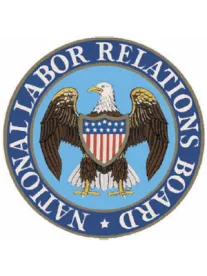September 25, 2017, marks a significant turning point in the recent saga of the National Labor Relations Board (NLRB). Eight months into the Trump administration, the U.S. Senate confirmed William J. Emanuel to fill the long-vacant and tie-breaking fifth seat on the Board. His elevation to the Board, along with fellow Republican Marvin E. Kaplan, finally gives Chairman Philip A. Miscimarra a majority on the Board. A rebalancing can now begin after eight years of dissents filed by Member Miscimarra and former members Harry I. Johnson III and Brian E. Hayes.
That's the good news. The bad news is that Chairman Miscimarra has announced that he will not seek reappointment to the Board when his term expires on December 16, 2017. Not only will the Board lose its short-lived majority, it will also lose a prolific member who is familiar with all of the Obama Board's decisions (many in need of reversal), since he wrote dissenting opinions in most of them. His departure will immediately force the Board into a 2-2 deadlock. Furthermore, the new Board majority led by Chairman Miscimarra will have to contend with current Obama-era General Counsel Richard F. Griffin Jr. until his term expires on November 4, 2017. The position of general counsel at the NLRB is unlike any other in the federal government in that, at the NLRB, the general counsel acts as a prosecutor with unreviewable discretion on the issuance or refusal to issue unfair labor practice charges and is in charge of directing the NLRB's regional offices and their lawyers. The general counsel's role is, in effect, to be the "gatekeeper" for the Board, controlling the cases that reach the Board for decision. So, unless a case with issues from the Obama Board in need of reversal is already in the pipeline to the Board, employers should not expect General Counsel Griffin to tee them up for the new majority or to instruct the regional offices to deviate from Obama Board interpretations.
Fortunately, the White House appears ready to act to fill Griffin's seat through the nomination of Peter B. Robb, an experienced management attorney and former Board lawyer from Vermont. Not yet announced, but widely rumored is the nomination of John Ring from the District of Columbia, an experienced management lawyer, to succeed Chairman Miscimarra. Hopefully, those nominations will be ready to be acted on as soon as the vacancies occur.
The Past Is Prologue
There is always a great deal of curiosity and anxiety whenever there is a change of political parties in the White House and the NLRB majority shifts accordingly. In 2009, when President Obama began his first term of office, my son Chris and I wrote a treatise for the U.S. Chamber of Commerce entitled The National Labor Relations Board in the Obama Administration: What Changes to Expect. To our surprise, the treatise became a big seller—required reading in many law schools. It predicted the issues the new Obama Board would consider and the precedent it would likely overturn. The treatise’s predictions were criticized in some quarters as being too dire: “Surely the Obama Board would not go that far!” was an oft-heard phrase.
Recently, eight years later, Ogletree Deakins lawyers together with the U.S. Chamber of Commerce wrote a sequel, The Record of the National Labor Relations Board in the Obama Administration: Reversals Ahead?
The 2017 sequel could just as easily have been titled "We Told You So!"
Not only did the Obama Board fulfill all of our "too dire" warnings from the 2009 treatise, it exceeded them. According to one study, the equivalent of 4,559 years of cumulative Board precedent was reversed in favor of decidedly pro-union decision making. That number—4,559—was arrived at by totaling the number of years of established precedent overturned by each Board reversal. (For example, the decision in Browning-Ferris Industries of California, Inc. d/b/a BFI Newby Island Recyclery, 362 NLRB No. 186 (2015), which reversed years of precedent, was added to Lincoln Lutheran of Racine, 362 NLRB No. 188 (2015), which reversed 53 years precedent, and so on.)
Unfortunately, some decisions left employers in uncharted waters after years—in some cases decades—of predictability. As Board members Miscimarra and Johnson wrote in their dissent in Browning-Ferris Industries: “We owe a greater duty to the public than to launch some massive ship of new design into unsettled waters and tell the nervous passengers only that ‘we'll see how it floats.’”
Predictions
As for predictions, both treatises were founded on a simple analytical predicate. In 2009, it was take every dissenting opinion written by Democratic Board Member Wilma B. Liebman and turn it into a majority opinion. Member Liebman served on the Board from 1997 – 2011, and as Chair from 2009 – 2011 during the early days of the Obama administration. The Obama Board turned Member Liebman's dissents into majority opinions and much more. Thus, in 2017, our predictions are to take Republican Board Member Philip A. Miscimarra's numerous dissents and turn them into majority opinions.
The task for Chairman Miscimarra and his Republican colleagues is daunting—and, unfortunately, Chairman Miscimarra will not be on the Board to have the satisfaction of seeing his dissents converted into majority opinions. But anticipate at the first opportunity the following Obama Board decisions to be reversed or modified:
-
Browning-Ferris Industries (joint employer standards)
-
Lafayette Park Hotel / Lutheran Heritage Village-Livonia ("chilling" Section 7 rights)
-
Specialty Healthcare (appropriate bargaining units)
-
Purple Communications (appropriate use of employer email)
-
D.R. Horton / Murphy Oil USA, Inc. (class action waivers in arbitration agreements) (case pending before the Supreme Court of the United States)
-
American Baptist Homes of the West d/b/a Piedmont Gardens (discretion in hiring replacement workers for economic strikers)
-
Election Rules
What's Next?
The dissents of Chairman Miscimarra and Board Members Johnson and Hayes are a convenient navigational guide for their successors to follow in restoring balanced labor policy. The cases listed above are the tip of the iceberg. Indeed, it took eight years to get this far off course on a wide variety of policy decisions favoring organized labor. Recharting a course will take time.




 />i
/>i
